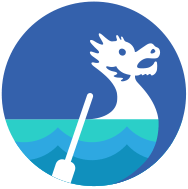Product operations (product ops) is a rising star in the modern product org (if you don’t know about it yet, read this intro to product ops), but few companies have managed to unlock its full potential and scale it for maximum impact. For those that have, increased efficiency, cross-team collaboration, and greater product portfolio outcomes are just some of the benefits they reap.
Fortunately, we’ve had a conversation with a product organization that has done exactly that. Hear from the Director of Product Ops at Tealium to see how the company went about building and scaling its product operations team while connecting OKRs, customer needs, product strategies, and resources with Agile execution.
What Does Product Ops Look Like at Tealium?
Jackie Orlando: I was the first hire when product ops started at Tealium, to help put some rigor around how we were working.
We were building from the ground up, and our focus was really on operational efficiency and foundational processes – how do we do what we do, but do it smarter, faster, and better? And with the least amount of admin overhead possible, while also trying to help PMs focus on solving customer problems, making strategic decisions, and not have to be in the weeds and worry about how to get things done?
As it Grew, How Has Product Ops Evolved at Tealium?
Jackie Orlando: The focus itself hasn’t really evolved… it’s more about the problems we tackled are evolving and getting more complicated.
We started out with a very specific charter of improving our go-to-market process and our enablement and making sure customer success, sales, marketing – everybody has what they need, in order to handle their pieces of the business when a feature launches.
On the same operational efficiency theme, now it’s growing it into – how do we standardize bug intake? How do we put processes around how we plan work? What other fundamental measures can we get in place so PMs can cross-share learnings they have?
Then, as product management matured, the areas of our focus matured with it, like looking at our wider portfolio management. And that’s what led us to Dragonboat as we continued to build and started scaling product operations. How can we have a better picture of our end-to-end organizational portfolio roadmap? How do we operationalize the artifacts that PMs need to create along the way for discovery and research? And not as a means to be prescriptive, but giving them tools to help guide them and have a foundational standard of how our product management organization operates.
What Challenges Led You to Evaluate and Select a Product Portfolio Tool?
Jackie Orlando: We needed to have a single source of truth for idea management, a way to enable smarter outcome-based decisions, visibility for senior leadership into investments being made, and general visibility with the roadmap, because there was a lot of feeling like things would go into a “black box”, and no one would know what was coming out the other side and when.
Not because the information wasn’t there… but because it wasn’t being shared in a consumable, accessible, or trustable way.
Why Did You Choose Dragonboat for Scaling Product Operations?
Jackie Orlando: When we set out to look for a portfolio management tool, because there are so many options out there, it can be overwhelming. We wanted to ground in what we were looking for, so we landed on a bulleted list of goals.
At the end of the day, Tealium landed on Dragonboat for a number of reasons. We needed to:
- Have a single source of truth for idea management and planning
- Make smarter, outcome-based decisions
- Provide senior leadership visibility into investment decisions made
- Streamline status and increase cross-functional transparency
- Improve confidence with better resource estimation and planning
First and foremost, it was the only solution I could find that actually focused on outcome-based decision elements, allowing us to tie our feature ideas directly to our company OKRs and product objectives. That then tied into the ability to slice and dice things and create reports that show senior leadership visibility into where their investments are being made against the goals that they have set for the organization.
The two-way JIRA integration was also a huge factor, because all the other tools that I found had a one-way integration where you could push to JIRA, but it wouldn’t go back. Having this really flexible and robust integration allows product to do whatever they need to do, however they need to do it in Dragonboat, and without asking engineering to change a single thing about how they operate day to day. Knowing the connectivity is there and the data is always going to be in sync was a really big thing for us.
It really felt more like a partnership than a vendor-customer relationship. And knowing that you guys would be there to help me figure out the right way and best practices, and you were invested in my success as much as I was.
What Teams Use Dragonboat and What Benefits Do They See?
Jackie Orlando: It’s our single source of truth for our organizational level portfolio management, health, and status mainly used by the entire product org, senior leadership, and marketing team.
The entire product management team is using it to score, rank, and plan their initiatives. We’re also using it to aggregate all the links to the key artifacts and documentation related to each initiative.
Read-only access is available to all of our senior leadership. I’ve created reports for them, but they also have the ability to slice things how they want to see it if they choose to.
Marketing is probably one of the biggest consumers as well. They need the information in order to strategize and plan their calendar. I think it really helps them to be able to pick and group and figure out how they want to tell their marketing story for Tealium, based on the rolling features that we’re continuously providing, and then Dragonboat providing the view of when to expect those things.
My boss is in Dragonboat all the time looking at things. We have bi-weekly engineering + product leadership meetings where we go through dashboards and look at the health of everything. So it’s used to manage up and C-level meetings.
“Dragonboat really did check that box completely, of providing visibility throughout the organization from a single place, and not having multiple different status documents in multiple different places where you just can’t trust the information because you don’t know how outdated it is. Everything is centralized.”Jackie Orlando, Dir Product Ops at Tealium
More Resources to Scale Product Ops
Want to scale your product operations like Jackie did at Tealium?
Check out these additional resources:
- Download The Product Ops Playbook: A Complete Guide for Outcome-Focused Teams
- Watch the Webinar: Fireside Chat with Product Ops Pros
- Read about the Top 12 Tools Product Operations Pros Need to Know
- Watch the live conversation between Jackie Orlando and Dragonboat:
Learn more about Tealium’s journey, building and scaling product operations here.


